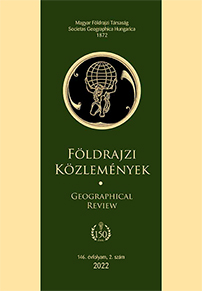Land Use and Landscape Pattern Changes in the Lower Drava Floodplain From the Mid-19th Century to the Present
Abstract
The primary objective of our research was to reconstruct changes in land use and landscape pattern along the Lower Drava from Tótújfalu to Drávaszabolcs from the mid-19th century to the present. Based on the information collected proposals are made to achieve optimal land utilization. Thereby sustainable agriculture can be introduced to the area with improved ecosystem services and extensive nature conservation. The study utilized GIS analyses, the combination of thematic layers of land use digitized from archive military survey and topographic maps and a supervised classification of satellite images to generate the proportions of land use classes and values of landscape metrics. Major transformations of land utilization were detected: by the 1940s human impact had intensified, natural habitats had shrunk, but subsequently the ratio of forests increased and the previous land use pattern began to take shape again. The reason for this development was that since 1920 the Drava had been functioning as a border river and arable cultivation began to be excluded from the active floodplain. At the same time, the gradual reduction of wetland and grassland areas led to lower biodiversity.
Copyright (c) 2022 Gergő Németh, Dénes Lóczy, Péter Gyenizse

This work is licensed under a Creative Commons Attribution-NonCommercial-NoDerivatives 4.0 International License.



